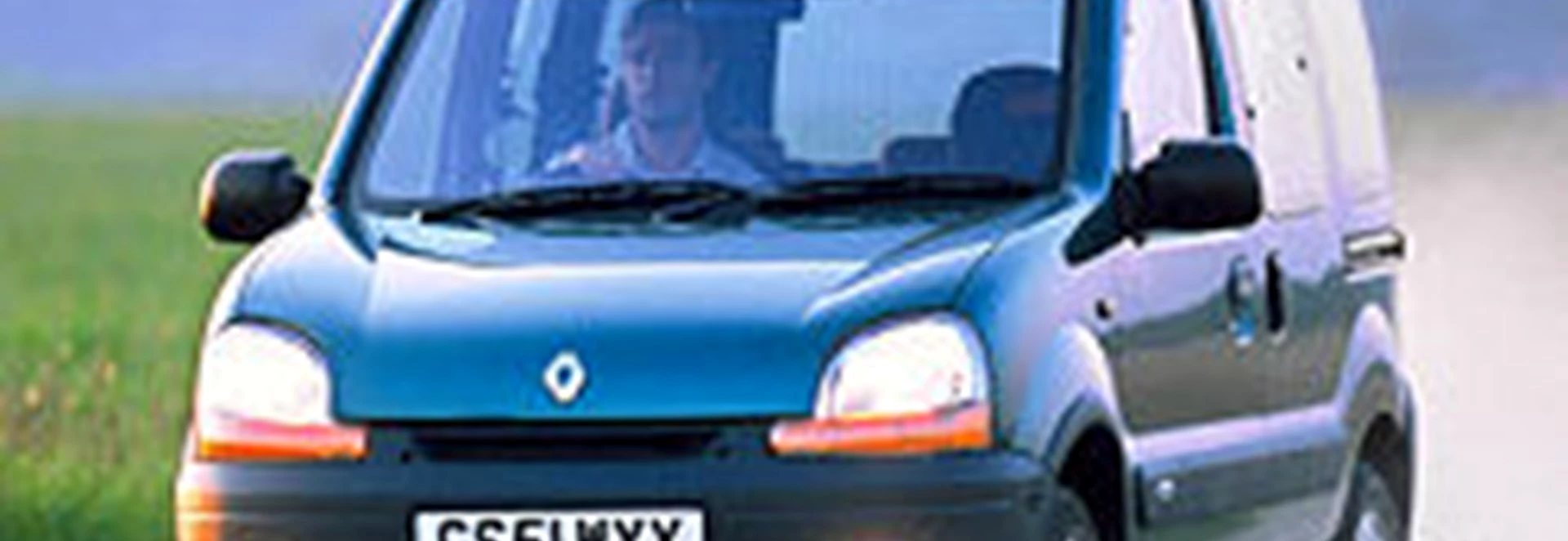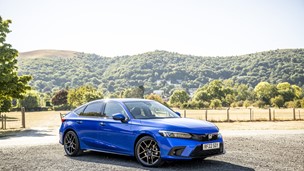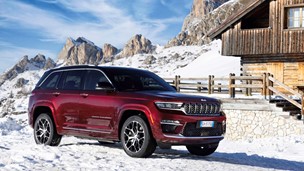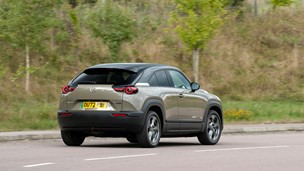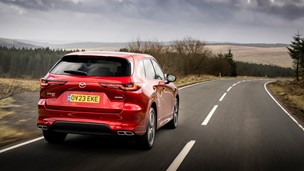"The sentry-box" was, to repeat a story told in an earlier CARkeys article, the nickname given by Danish composer Carl Nielsen to a Renault he drove in the 1920s, which was given to him by a wealthy businessman who was also a fan of his music. Nielsen chose the name because of the car's shape, and, indeed, archive pictures show that although it didn't take up a lot of road space, it was very tall.
In other words, it was quite unlike any car built in the last fifty years. It would never have occurred to me that any modern Renault could possibly be described in the same terms as Nielsen used until I was walking back to where I had parked the Kangoo Trekka test car. Although I'd had it for a couple of days, this was the first time I'd ever seen it head-on, and my immediate reaction was, "Aha! It's another sentry-box!"
Even compared with other Kangoos, the Trekka is distinctly out of the ordinary, not because it has any extra fancy equipment tacked on but simply because it is substantially taller than its stablemates. The reason for this is that the Trekka is the 4x4 version, intended for modest off-road work which, to be realistic, is likely to involve nothing more challenging than an occasional foray onto a beach.
The extra ground clearance isn't the whole story, of course. The van-based Kangoo is in any case a tall vehicle. In most cars the top of the windscreen is nearly the highest point of the car, but the Trekka's roof line curves up a good deal further than this, creating a vehicle in which you can almost stand up.
Renault has made use of this extra space by providing a series of high-level compartments where you can store various bits and pieces. With the rear seats folded you can also carry very tall objects if the need arises.
In my case, the need didn't arise, but I was called upon at one stage to be a sort of orchestral roadie and carry two large drums to a concert hall. Apart from the fact that these had to be negotiated past the spare wheel (the 4x4 system means there is no room to store it under the floor), the Trekka had no problem carrying them, a feat which greatly impressed onlookers who were present at the time. Since we once had an e-mail from a reader who was asking about cars which had enough room to carry a double bass, I suppose I should point out that the Trekka would be able to swallow at least two without any difficulty. Or, come to that, a harp. But you get the idea.
Inevitably, the Trekka is seriously affected by crosswinds, of which I had to cope with several during the test. There's a lot of side area for a stern north-easterly to blow against, but this is quite a well-sorted car and it didn't feel any less stable than might be expected of something of its shape.
Although nobody in their right mind would buy a Trekka for its sporting capabilities, the engine is strong enough to prevent the car from being sluggish. It also handles quite smartly, all things considered. Its only real failing as a day-to-day car is the high interior noise level caused by the engine note reverberating around all that empty space.
Overall, the Trekka is a car that seems to make perfect sense on the French market but may have much more limited use in the UK. On the other hand, while some magazines may fail to see the point and be completely dismissive of it, there is no doubt a small part of the population for whom it will be just ideal.
Second opinion: Yes, this is the kind of car there's absolutely no point in buying if you don't need the specific features and capabilities it has to offer, at the price. But if you do, then there's nothing on the market to match it. Skyscraper-style headroom, plenty of general rear seat space, reasonable load volume even with the spare wheel upright on the offside, sensible sliding rear doors, and a tailgate which opens high enough for a six-footer to stand under it without crouching. Plenty of stowage spaces inside, including a full-sized bottle recess right at the back. The four-wheel drive clicks in as soon as the system senses the front wheels starting to spin, and front-to-rear torque split is via a Nissan hydraulic coupling, Nissan being more familiar with off-roaders than Renault is. Poor economy, of course, thanks to the extra weight and sentry-box drag coefficient, and a lot of motorway wind noise, some of it coming via the test car's electrically retractable fabric sunroof over the rear seats. Obviously, you have to accept considerable body lean on corners, but the Trekka, like the standard Kangoo, is an unexpectedly brisk machine when chucked through the bends. No kidding. The 4x4 Kangoo was originally launched as the Trakka, but changed its name, perhaps because of the existence of the Vauxhall/Opel Traka concept pickup of a few years ago. Ross Finlay.
